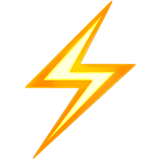What is Uric Acid and How to Control it: High Uric…
Fevers

Chills:
Chills refers to feeling cold after an exposure to a cold environment. The word can also refer to an episode of shivering along with paleness and feeling cold.
Considerations
Chills (shivering) may occur at the beginning of an infection and are usually associated with a fever. Chills are caused by rapid muscle contraction and relaxation. They are the body’s way of producing heat when it feels cold. Chills often predict the coming of a fever or an increase in the body’s core temperature.
Chills are an important symptom with certain diseases such as malaria.
Chills are common in young children. Children tend to develop higher fevers than adults. Even minor illness can produce high fevers in young children.
Infants tend not to develop obvious chills, but any fever in an infant 6 months or younger should be reported to a health care provider. Fevers in infants 6 months to 1 year should also be reported unless the parent is certain of its cause.
“Goose bumps” are not the same as chills. Goose bumps occur due to cold air. They can also be caused by strong emotions such as shock or fear. With goose bumps, the hairs on the body stick up from the skin to form a layer of insulation. When you have chills, you may or may not have goose bumps.
Causes:
- Exposure to a cold environment
- Viral and bacterial infections •Bacterial gastroenteritis
- Colds
- Infectious mononucleosis
- Influenza
- Meningitis
- Pneumonia
- Strep throat
- Viral gastroenteritis
- Urinary tract infections such as pyelonephritis
- Dress the child in light clothing, provide liquids, and keep the room cool but not uncomfortable.
- Do not use ice water or rubbing alcohol baths to reduce a child’s temperature. These can cause shivering and even shock.
- Do not bundle a feverish child in blankets.
- Do not wake a sleeping child to give medicine or take a temperature. Sleep (rest) is more important.
- There is stiffness of the neck, confusion, irritability, or sluggishness.
- There is a bad cough, shortness of breath, abdominal pain or burning, or frequent urination.
- A child younger than 3 months has a temperature of 101°F or more.
- A child between 3 months and 1 year has a fever that lasts more than 24 hours.
- The fever remains above 103°F after 1-2 hours of home treatment.
- The fever does not improve after 3 days, or has lasted more than 5 days.
- Is it only a cold feeling?
- Are you actually shaking ?
- What has been the highest body temperature connected with the chills?
- Did the chills happen only once, or are there many separate occurrences (episodic)?
- How long does each attack last (for how many hours)?
- Did chills occur within 4 – 6 hours after exposure to something that you or your child are allergic to?
- Did they begin suddenly?
- Do they occur repeatedly? How often (how many days between episodes of chills)?
- What other symptoms are present?
- Blood (such as CBC or blood differential) and urine tests (such as urinalysis)
- Blood culture
- Sputum culture
- Urine culture
- X-ray of the chest
Related Posts
Men's Health As the medical science grows especially endorsing the ancient…
Hair Care and Its Tibbi Perspective: Unani for hair fall Unani…

 by
by
This Post Has 0 Comments